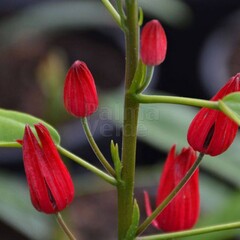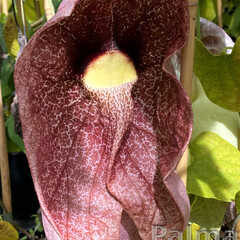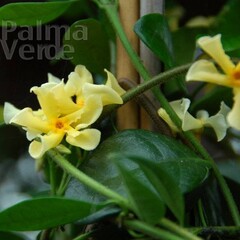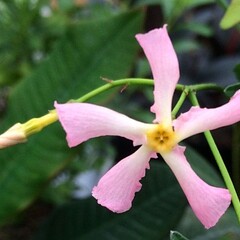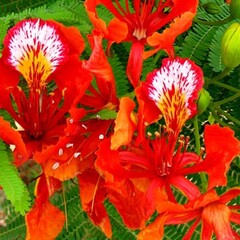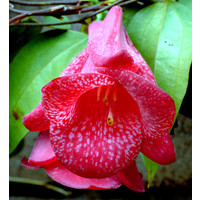Lapageria rosea named after the Empress Josephine (wife of Napoleon), is the national flower of Chile. Her maiden name was Tascher de la Pagerie.
This plant was brought from Chile by a Napoleon botanist at the end of the 17th century. Tascher de la Pagerie became the name of the flowery plant. Later in Lapageria in Latin.
This climbing plant is originally found in the forests of Chile.
The Lapageria rosea is a fairly scarce plant and therefore very special for the collector. Young plants are still growing slowly.
It is ideal for the terrace, conservatory or balcony. A half shaded place to light shade is good, avoiding exposure to the hottest afternoon sun.
This climbing plant must be helped with a climbing frame.
The height will be a maximum of 300 cm in our climate, but this climbing plant is easy to prune.
In Chile they are almost 10 meters high.
The flowers almost don't seem real, as if they were made of wax. There are various color variants, red, pink / red, pink (var. Lapageria rosea and var. Superba) and white (var. Lapageria albiflora).
The Lapageria rosea is an evergreen plant.
If the temperature does not fall below 10 degrees Celsius, it will also retain the new buds, otherwise flowering will fall in the course of autumn. In a greenhouse you can certainly enjoy this flowering champion until the winter.
The flowering time starts very early in the summer and lasts until the end of autumn.
Spending the winter at a temperature of + 7ºC or warmer is fine, starting outside again on the terrace from spring. Soil from the Lapageria must be humus-rich (good permeable potting soil, slightly acidic) and keep slightly moist. Apply a small amount of liquid fertilizer for flowering plants every 3 to 4 weeks during the growing season.
Winter hardiness zone 11 (+ 7ºC).



















